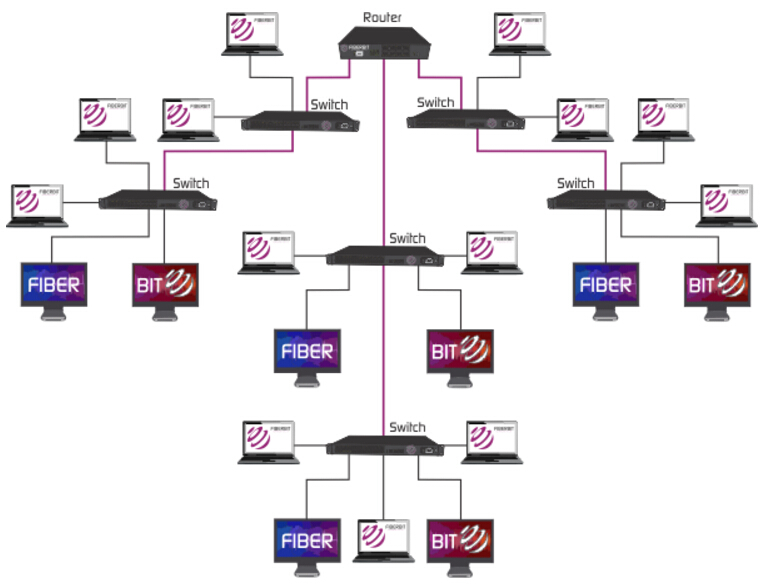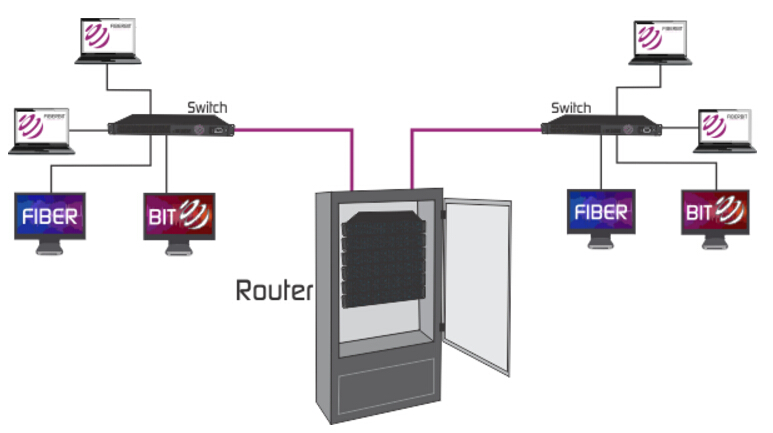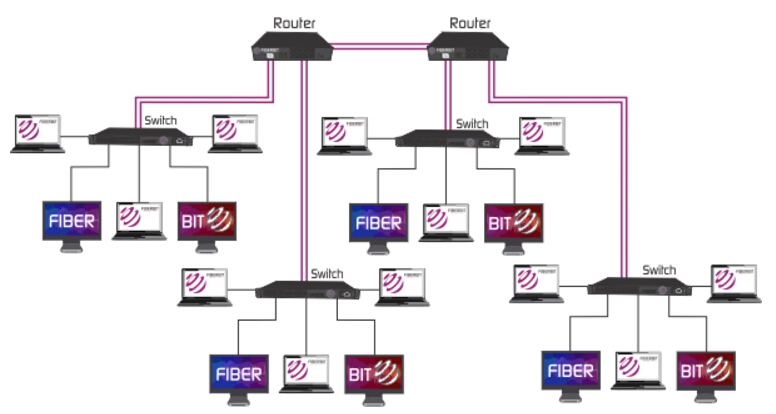The past decades have witnessed a tremendous increase of Internet users, which directly lead to the growth of the traffic in backbone networks throughout the world. Besides, new services like video on demand, electronic distance learning and grid computing applications also contribute to the accelerating traffic in broadband networks. As a result, it is urgent and inevitable for service providers to increase the bandwidth of their backbone networks to account for this increase in traffic. And among various technologies, optical fiber technologies are proved to be the prime choice since it enables transmitting enormous bandwidth required by traffic growth in backbone networks.
A backbone is the part of the computer network infrastructure that interconnects different networks and provides a path for exchange of data between these different networks. A backbone may interconnect different local area networks in offices, campuses or buildings. When several local area networks (LAN) are being interconnect over a considerable area, the result is a wide area network (WAN), or metropolitan area network (MAN) if it happens to serve the whole city.
On a large scale, a backbone is a set of pathways to which other large networks connect for long distance communication. Various networking technologies work together as connection points or nodes, and are connected by different mediums for transporting data like optical fiber, traditional copper and even wireless technology like microwave and satellites.
Backbones typically consist of network routers and switches connected by fiber optic or Ethernet cables. Computers normally do not connect to a backbone directly. Instead, the networks of Internet service providers or large organizations connect to these backbones and computers just access the backbone indirectly.
In this part, we will briefly explain some backbone network types: serial backbone, distributed backbone, collapsed backbone and parallel backbone.
Serial backbone is the simplest kind of backbone with two or more devices that are connected in a daisy chain (linked serial). It can be made from both switches and from gateways and routers. What should be noticed is that when designing the backbone, it is of great importance to consider the limit of the devices that can be connected to the backbone. Because exceeding the limit may lead to unexpected errors and data loss in the network.

Distributed backbone adopts hierarchical design of the network. In this type of backbone, a number of intermediate devices are connected to single or multiple connectivity devices. The central connectivity devices could be switches or routers. Distribution backbone features easily scalable and simple administration and management of the network. Therefore, it is rather relatively cost-effective, easy and quick to implement the distribution backbone network.

Collapsed backbone contains a single and powerful router which acts as the central connection point for multiple sub-networks. The central device is the highest level of the backbone, so it should have powerful computational power in order to manage big traffic coming in. The risk is that whenever the central device fails, the whole network would be down. But this backbone could be useful if someone wants to interconnect two types of sub-networks, then it is possible to manage and troubleshoot them.

This type of backbone can be seen as a variation of the collapsed backbone, where devices are having more than one connection between them. There are multiple connections between the high level routers and the network segments. These connections ensure networks availability at anytime, higher speeds, and high fault tolerance. Since the amount of required cables increases dramatically, it inevitably results in higher expenditure. Fortunately, duplicate connections are not necessary for all the devices, therefore, to implement parallel structure selectively would tremendously decrease the overall price and make additional ports of the devices available.

To sum it up, a backbone is designed to transfer network traffic at higher speed, maximize the reliability and performance of large-scale, long-distance data communications. With the advance and maturation of the network backbone technologies, it surely will provide us more smooth and convenient network experiences.




